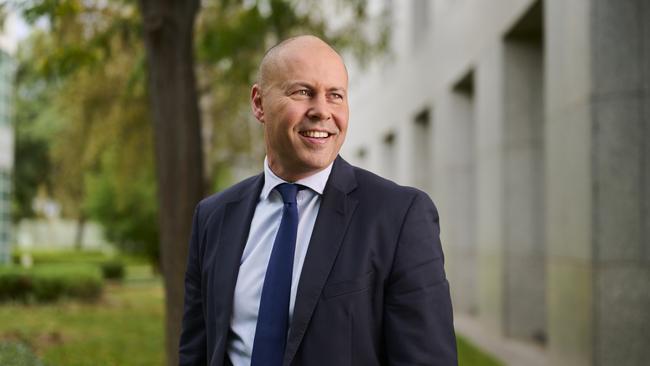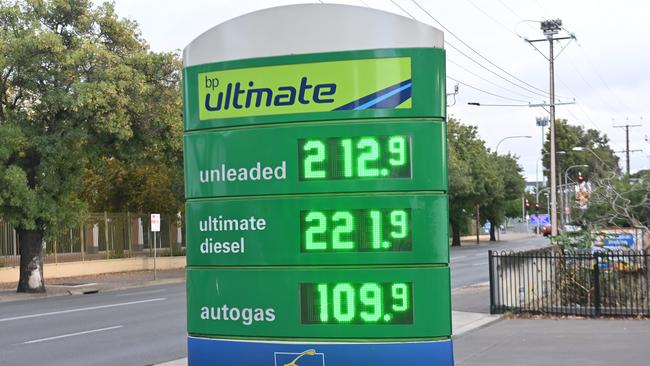$40b spending spree: What Qld gets in federal budget
Queensland’s electoral importance in the upcoming federal election is demonstrated in the major cash splash offered up in this year’s budget.
QLD Politics
Don't miss out on the headlines from QLD Politics. Followed categories will be added to My News.
In a $40 billion election gamble to cut the cost of living, the budget will deliver a $250 petrol saving to the average motorist and an extra $420 into the bank accounts of 10 million Aussies and cash bonuses to pensioners.
New families will win too, with easier paid parental rules for 180,000 new mums and dads.
Defence and national security also play a huge role in the khaki budget, as the Morrison Government seeks to position itself and strong and dependable amid growing uncertainty in Europe and in the Pacific.
Despite a $40 billion spending spree, Treasurer Josh Frydenberg insisted he has taken a responsible middle ground which will not drive up inflation – and mortgage repayments along with it.

The budget bottom line has improved by more than $100 billion, as more people are in work paying tax and fewer people on welfare.
But it is not enough to stop the nation’s gross debt tipping over $1 trillion dollars in two years.
Queensland’s electoral importance is demonstrated in the major cash splash, with $3.9 billion in road and rail – including the Brisbane to Sunshine Coast Rail, the $5.4 billion for Hells Gate and $1 billion to clean up and protect the Great Barrier Reef – though much of this won’t be seen within the next four years.
Framing the budget in the context of global insecurity, from the pandemic to war in Europe, Mr Frydenberg described his fourth and possibly final budget as responsible and measured while recognising that rising costs were hurting families.
“A family with two cars who fill up once a week could save around $30 a week or around $700 over the next six months,” he said.
“Whether you’re dropping the kids at school, driving to and from work or visiting family and friends, it will cost less.”
Treasury are expecting the strongest growth in wages in a decade, which would see someone earning $90,000 a year take home an extra $13,000 in their pay packet over four years.
But with inflation set to top 4 per cent, people will notice only a little difference in their wallets at the end of the day.
There are three key cost of living measures:
* Slashing petrol excise in half for six months.
* A $420 tax offset for people earning $126,000 a year.
* A $250 payment to pensioners and welfare recipients.
The biggest cost of living measure in the budget is slashing the 44.2c/litre petrol excise by 22.1c for six months – taking place from midnight tonight.

It is expected to take about two weeks for it to fully flow through to the bowser, while consumer watchdog the Australian Consumer and Competition Commission will be charged with ensuring its passed on.
It would mean a $250 saving over the six months for the motorists, based on the ABS data on the average motorist covering 11,100km a year using 11L/100km.
The $420 bonus will supercharge last year’s low-and-middle income tax offset, which will flow through in tax returns from July.
It means someone already expecting the $1080 offset will now get $1500, while a two-income family could get as much as $3000 back in their tax returns.
More new families will be able to take up the 20 weeks paid parental leave, and split the time between mum and dad as they please, with the eligibility threshold eased.
Small businesses can look forward to an extension of the instant asset write off for another year.
They will also be able to claim a 20 per cent tax deduction for putting new and existing employees through external training courses until June 30, 2024, including cyber security training.
Another 20 per cent deduction is available for expenses that help digital uptake, like an online sales platform, cyber security enhancements or digital tracking for livestock.
Online security will play a major role as the nation’s cyber spooks have their budget doubled as part of a $9.9 billion investment.
It will be the largest investment in Australia’s offensive and defensive cyber capabilities ever, as nation’s like Russia and China increasingly turn to grey zone warfare in online realms.
Beyond the infrastructure and dam investments, regional Queensland will get a $1.7 billion including almost $500 million for Urannah Dam, $400 million for the inland freight route from Charters Towers to the NSW border – also known as the ‘second Bruce Highway’ – as well as $80 million towards the Bowen pipeline.
Government sources described it as investing where Australia makes money, in coal, cattle and agriculture exports, to boost its ability to pay for the increased defence spending and strengthen the economy as quickly as possible.
The gross debt will continue to grow and hit the Australia will tip over the $1 trillion gross debt threshold in just two years – but with the economy growing faster the deficit is already coming down.
The deficit will hit $78 billion next financial year, down from the $99 billion expected at the mid-year budget update in December.
It will continue to decrease to $43.1 billion per cent by 25-26, which Treasurer Josh Frydenberg spruiked as “banking the dividend of the strong economic recovery”.
“This economic rebound is nothing short of remarkable … Our budget has turned the corner,” he said.
Conservative assumptions around key commodities currently enjoying record high prices, like iron ore and coal, mean the budget bottom line will improve by another $30 billion than banked on if those prices stay up.
But there will not be a balanced budget this decade.
Unemployment reaching 3.75 per cent in September – staying there until 2025-26 where it will increase to 4 per cent.

The $40 billion in new spending in the budget includes about $8.6 billion in cost of living measures, $6 billion in the Covid winter preparedness plan, $2 billion in floods and $15 billion for skills, small business and the regions, as well as $4 billion for health and $2 billion for women’s safety and security.
Labor has indicated it will wave through “responsible” cost-of-living measures, which means the petrol excise and bonus payment are likely to be legislated before the election.
Opposition leader Anthony Albanese criticised the government for only realising there was a cost of living crisis just weeks out from the election.
“We have been completely constructive. I think we have got it right during this period of Opposition,” he said.
“The same can’t be said of this ‘too little, too late’ government.”



